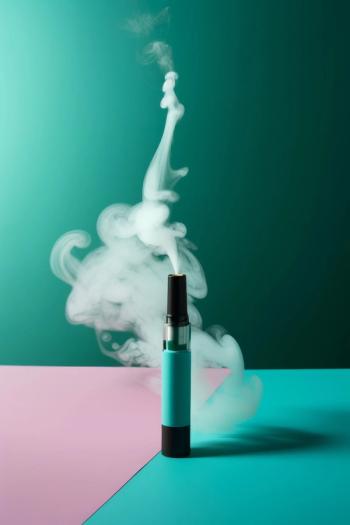
Cannabis Science and Technology
- October 2022
- Volume 5
- Issue 8
- Pages: 32-33
How Manufacturing, Regulations, and Sustainability Are Affecting the Cannabis and Hemp-Based Products Industry
Experts within the global cannabis and hemp industries discuss the importance of testing and regulations and sustainable measures that can reduce the sector’s environmental impact.
The cannabis industry expects to reach approximately 1.8 billion USD by 2026—a projected increase of almost 8.49 million USD in six years (1). In this rapidly evolving market, cannabis and hemp-based products are becoming increasingly available in certain countries and states where legalization is granted. However, regulations surrounding such products are ever-changing. As a result, it has become increasingly important for manufacturers and cannabis and hemp testing laboratories to keep up to date with these changes to ensure their products reach the end-consumer safely and maintain high-quality standards.
Despite this, the increase in the manufacturing of cannabis and hemp-based products has questioned how sustainable the industry is. Like other industries, sustainability and eco-friendly practices will be central to the growth of this sector. Therefore, the environmental implications of industry practices need addressing.
In this article, three experts share their insights into the cannabis and hemp-testing industry and aspects within the sector that are shaping the industry’s future:
- Anthony Macherone, PhD,
Strategic Technical & Content Scientist at Agilent - Justin Ihnken, CEO and cofounder of QNTM Labs
- Kaitlin Urso, BusinessEnvironmental Consultant
at the Colorado Department of Public Health
and Environment
Impact of Regulations on Cannabis and Hemp Testing Research
Over the last 5 years, increasingly, more regions and countries have solidified laws and regulations to permit the use of cannabis and hemp-based products. Whether for export, growth, production, or medicinal use, there are many safety aspects to consider when bringing cannabis or hemp-based products to the market.
Dr. Anthony Macherone, the strategic technical scientist at Agilent, has been working on the development, deployment, and support of chemical testing surrounding “cannabis” over the past 6 years. He explains that the primary purpose of testing cannabis products is to ensure safety and compliance with local regulatory laws. This is a crucial step in ensuring that there are no harmful residual pesticides, residual solvents, or metals in the product. These legal sensitivities are based on various regulatory laws across the globe, but particularly in the US, where each state has its own rules on recreational and medicinal cannabis. For this reason, compliance with regional laws is a great challenge for testing laboratories.
Dr. Macherone suggests that this is amplified by the additional challenge of testing laboratories having to account for the numerous cannabinoid-infused products, such as gummies or beverages like soda or seltzers. In this regard, sample preparation adds an additional layer of challenge for compliance with
regulatory laws.
Pushing the Boundaries and Creating Solutions
Justin Ihnken, CEO and cofounder of QNTM Labs, an analytical contract laboratory testing company based in Denmark, discussed his experience working within this industry and the promising future for the laboratory testing industry.
Ihnken moved to Denmark from the US and noticed the need for quality control laboratory testing within Europe’s pharmaceutical industry, particularly regarding how quality control laboratories provide outsourced laboratory services for cannabis-based pharmaceuticals. Given the continual development of European regulatory requirements for contract laboratory testing, it was clear that there was a demand for strategic guidance and collaboration, with medical cannabis being a key focus.
Ihnken spoke about the importance of bridging the knowledge gaps customers face using contract laboratories so that a targeted strategy and clear direction can be provided to increase stakeholder transparency. He further emphasized that customers want to understand and meet the requirements in an ever-changing field, but unfortunately, knowledge is lacking within these developing industries.
The Impact of Environmental Regulations
As societies and governments become more environmentally conscious, the cannabis and hemp testing industry needs to implement strong and lasting approaches to achieve sustainable growth. Kaitlin Urso, business environmental consultant at the Colorado Department of Public Health & Environment, shared a fresh perspective on compliance with environmental regulations.
Urso revealed that the cultivation and processing of cannabis plants has a significant impact on the environment, however, methods to monitor these effects are challenging, with the industry having minimal environmental reporting requirements. On the cultivation side, cannabis plants are primarily grown indoors, and require high-energy light, heat, ventilation, and air conditioning which subsequently utilizes a great deal of energy. She suggests that if the industry transitioned to LED lights, growers and manufacturers would consume significantly less power.
From a cultivation perspective, a key concern is plant waste, hazardous waste, and air emissions. As cannabis grows, it emits terpenes, such as other indigenous plants like pine trees, which produces cannabis’ characteristic smell. Terpenes are volatile organic compounds (VOCs). The Colorado air study concluded that although cannabis VOCs are highly odorous, they do not threaten public health or the environment.
Urso mentioned a study she conducted, focusing on primary reactions around terpenes, in which her team tried to establish an emission factor for cannabis cultivation. Her team concluded that the high odors of cannabis plants in downtown Denver did not correlate with high VOC emissions.
If the US allows for interstate commerce of cannabis, this could lead to efficient outdoor cultivation in areas of the country that support this. This would function similarly to how agricultural commodities are grown today and would significantly cut environmental efficiencies by by-passing the creation of highly synthetic environments.
Conclusion
Efforts to strengthen policies and tactics around the testing, regulation, and sustainability of the cannabis and hemp industry are essential to the progression and growth of the industry. It is becoming increasingly clear that manufacturers and testing laboratories must adapt and incorporate changes in testing and regulation into their manufacturing process, not only for compliance, but to ensure that products are high-quality and safe. Taking steps to minimize the environmental impact of cannabis cultivation is also key to ensuring that the industry is sustainable and contributes to the greater global mission of protecting our planet.
Reference
About the Authors
Anthony Macherone, PhD, is the Strategic Technical Scientist at Agilent Technologies. Justin Ihnken is the CEO and cofounder of QNTM Labs. Kaitlin Urso is the Business Environmental Consultant at the Colorado Department of Public Health and Environment. Direct correspondence to:
How to Cite Article:
A. Macherone, J. Ihnken, and K. Urso, Cannabis Science and Technology® Vol. 5(8), 32-33 (2022).
Articles in this issue
about 3 years ago
New Data on the Environmental Impact of Cannabis CultivationNewsletter
Unlock the latest breakthroughs in cannabis science—subscribe now to get expert insights, research, and industry updates delivered to your inbox.




